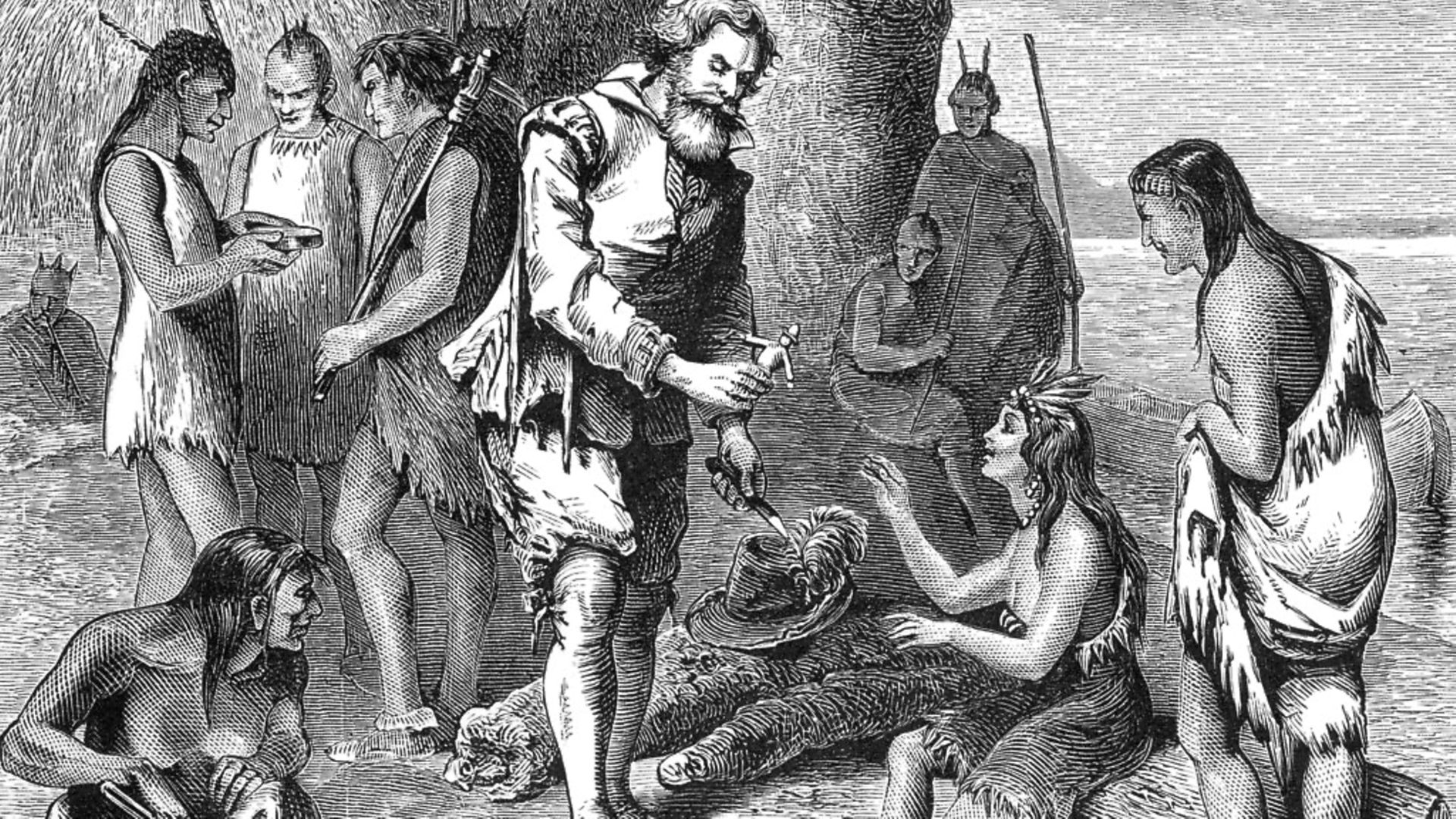
PETER TRUDGILL on the first meeting of two languages, one of which has since died out – but not without leaving some traces.
The first location in which any sizeable group of native speakers of English became successfully established outside the British Isles was the Jamestown settlement, in what was to become the United States of America.
It was founded on May 14, 1607, as a private venture by the London Company under Captain John Smith, with a charter granted by King James I of England and Scotland.
Nobody applied for a charter from the indigenous people who had already been living there for thousands of years.
The main goals of the Company in the founding of the settlement were not only to convert the natives to Christianity but also to find and extract gold and silver, as well as, astonishingly, locate a river route to the Pacific Ocean to facilitate trading with the Far East.
The distance of the voyage from London to Jamestown was about 3,200 nautical miles, and it took four long months to cross the ocean. The Company’s three ships sailed out of London at the end of December 1606, and it was not until April 26, 1607, that the more than a hundred anglophone settlers landed in the Americas.
The exact site of the settlement was finally determined two and a half weeks later, near to modern-day Williamsburg in what is now Virginia. It was named after King James, who had given them permission to settle there.
The area was inhabited by Native American tribes – they had naturally given no such permission – who were were members of the Powhatan Confederacy. They spoke an Eastern Algonquian language known to linguists as Virginia Algonquian, which at that time had perhaps 20,000 speakers.
In the early years of the Jamestown settlement, the English settlers really had no idea about how to survive in their new environment. They were therefore very dependent on the Native Americans for food; and they appear to have learnt quite a lot of Algonquian words which, unsurprisingly, included the names of a number of potential foodstuffs, such as hominy, ‘ground maize kernels’, from uskatahomen; persimmon from pushemins; opossum, from opassom; raccoon, from rarowcun; and terrapin, from torup.
Some reports suggest that more words have been borrowed into English from Virginia Algonquian than from any other Native American language.
Other items from this now tragically dead language which many English speakers are still familiar with today include hickory, from pawcohiccora, which actually meant the ‘milk’ made from hickory nuts; moccasin, from mockasins; and tomahawk, from tamahaac.
After three years, the Jamestown colony was very close to failing. In the August of 1607, many of the colonists died from dysentery as well as other diseases; and then in the autumn of 1609, the indigenous people began a campaign of starving the English out of what they naturally still regarded as their territory.
They stopped bartering with the settlers for food, and attacked men who ventured out of the settlement to go hunting.
The coming winter came to be known as the ‘Starving Time’; and when the spring of 1610 arrived, large numbers of the colonists had perished. A decision was taken to abandon the colony, and the whole community started to sail for home. But then other English ships suddenly appeared on the horizon, loaded with many more colonists and supplies, and they turned back. In the end, the colony did survive.
A temporary peace was also achieved with the Native Americans. But that ultimately did the Virginia Algonquians and their language absolutely no good at all.
Tragically, like many other Eastern Algonquian languages, Virginia Algonquian eventually died out, as those members of the community who had survived the conflicts with the settlers and the European diseases they had imported, gradually shifted, under various different demographic, social, and economic pressures, to speaking English.










